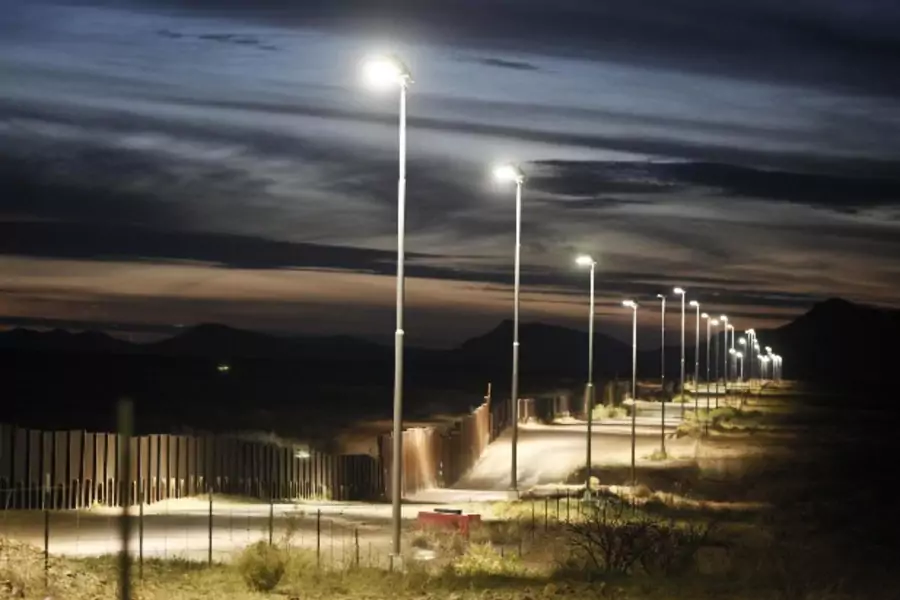Chinese Human Smuggling and the U.S. Border Security Debate

More on:
Rachel Brown is a research associate for Asia Studies at the Council on Foreign Relations.
Migration across the U.S.-Mexico border is the source of polarizing debate in American politics, but rarely is it coupled with another touchy political topic: China. News of an uptick in the number of Chinese citizens smuggled across the border into southern California thus came as a surprise. In June, the San Diego Border Patrol sector reported stopping approximately 663 migrants from China over the past eight months, a 1,281 percent increase from the previous year. A spokeswoman for the Border Patrol explained, “We just weren’t getting [Chinese citizens]” before. In fact, unauthorized immigration from China is hardly a new phenomenon. Now, however, it has metastasized to different locations and taken on new, more sinister dimensions following the development of closer ties between Chinese and Latin American criminal groups.
Concerns over human smuggling from China to the United States – both by land and by sea –are long-standing and have reappeared often over the last four decades. A 1993 article in the LA Times reported the arrest of over four hundred smuggled Chinese in the San Diego area and noted that “the boom in illegal immigration by sea from China’s Fujian province [the source of many unauthorized Chinese migrants in the United States] has prospered largely because of an alliance between Chinese and Latin American smuggling rings.” Despite law enforcement efforts, smuggling continued, and in 2010, Border Patrol in Tucson announced an increase by a factor of ten in the number of Chinese citizens stopped while illegally transiting through the Sonoran Desert.
These numbers are large, but they represent only a small portion of the overall phenomenon. The Migration Policy Institute estimated that there were 285,000 unauthorized Chinese immigrants living in the United States, the most from any nation outside Latin America. In part, this large number speaks to the difficulty of immigrating to the United States through traditional channels. While most unauthorized immigrants simply overstay their visas, for those who are smuggled, popular routes include going by boat or flying for various legs before arriving in Mexico City or the Yucatán Peninsula and then moving north.
Smuggling Chinese across the southern U.S. border appeals to traffickers because it is more lucrative than smuggling individuals from Mexico or Central America. A longer journey commands a steeper price and the going rate per person is believed to be somewhere between $50,000 and $70,000; the total value of the trade for the Chinese mafias involved has been estimated at $750 million.
The role of Chinese mafia groups (triads) in bringing migrants across the border has also deepened their exposure to and ties with Latin American narcotics cartels, both in human smuggling and beyond. An “alliance between Chinese and Latin American smuggling rings” was noted as early as 1993, but today the scope of this “alliance” encompasses not just smuggling, but also other illicit activity including the sale of drug precursors from Asia and pirated materials. In Mexico, contact between triads and cartels occurs in various regions including those ruled by the ruthless Los Zetas syndicate and the Gulf and Juarez cartels, depending on what routes are used for migrants. Triad groups are believed to operate in the Mexican state of Chiapas and the Red Dragon triad, which operates in Peru, is involved not only in smuggling, but also in extortion and drug trafficking within Latin America. The wide-ranging activities of transnational organized crime groups generate additional law enforcement concerns beyond border security.
Addressing the challenge of smuggling and trafficking of Chinese through Latin America will require the United States, China, and Latin America, particularly Mexico, to work together. The United States and China already operate the Joint Liaison Group on Law Enforcement Cooperation, which was established in 1997 to address a variety of issues including “drugs, and repatriation of illegal immigrants.” During President Xi’s state visit in September, he and President Obama reiterated their commitment to expand law enforcement collaboration. Meanwhile both economic ties and other exchanges between China and Mexico have expanded in recent years. Trilateral law enforcement cooperation on immigration and drugs could be a natural extension of these existing relationships. Indeed in 2013, R. Evan Ellis of the Center for Hemispheric Defense Studies at the National Defense University, proposed the establishment of a “multinational anticrime mobile assessment and training team.” Such a team could help share information, address language issues, and coordinate strategies specific to each country involved. While the media often portray the relationship between China and the United States in Latin America as more competitive than cooperative, perhaps the often fractious debate over unauthorized immigration could generate a new source of collaboration.
More on:
 Online Store
Online Store